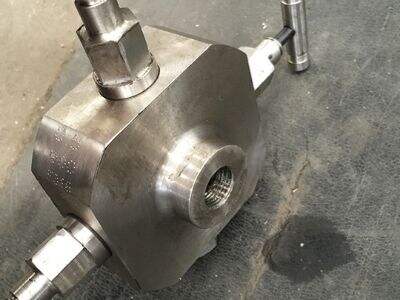General introduction to metal seated ball valve
Valves are used in a wide range of processes in the chemical sector, some of which are extremely corrosive. Valves are necessary in chemical processing because they control how a substance travels through pipelines, which overall improves the process. Metal seated ball valves have become increasingly popular for this sort of work in recent years. Sevalve metal seated ball valves are designed to withstand the harshest environments – high temperature, high pressure, and aggressive materials, including acids and solvents. Consequently, they top entry ball valve are ideal for chemical processing facilities.
What Are Metal Seated Ball Valves?
Metal seated ball valves are specially designed with a metal core and a smooth ceramic ball on its inside. This design is particularly useful as it makes this valve durable under even most extreme chemical conditions. Because the surface of the ceramic ball is sufficiently sturdy and does not wear off easily, the valves of these are often seldom to be repaired or replaced. The axial flow check valve reason is that these valves are very durable and help industries to carry out their job without disruption.
How To Choose The Right Metal Seated Ball Valve
There are a few essential considerations to make when selecting one of the best metal seated ball valves for chemical processing. The first thing you need to consider is the material of the valve. Various materials are available, such as stainless steel, carbon steel, and duplex steel. These high-quality materials resist rust and other forms of damage and can withstand the elevated temperatures and pressures generated in many chemical processes.
The overall size of the valve is another consideration. The fully welded ball valve size of the valve matters and will affect how much a substance can travel through it in one release. There are numerous types and sizes of good metal seated ball valves; sev-valve offers an information section to get you to the proper sizing for your unique process. Selecting the appropriate size is critical to your system functioning optimally.
Reasons of Advantages of Metal Seated Ball Valves
Due to this durability, one major reason why metal seated ball valves are often considered to be the best option is that they tend to last longer than other types. And will rust and wear less over the years. There's also a design advantage to that, which allows them to seal better, reducing the chance of leaks. Less leaks equal more efficiency, so at the end of the day it can save money for the companies that have to deal with this on a daily basis. With Sev-valve metal seated ball valves, businesses enjoy the entire life of the metal seated ball valve and hardly ever need to replace them, making it a cost-effective option.
Additionally, maintenance requirements are greatly reduced, leading to lower replacement costs. As a result, there is less downtime planned as these valves intended to be the robust ones allowing the equipment to run for prolonged periods without being required to interrupt for nearly the repairs. Routine maintenance can be carried out as per a schedule, thereby minimizing equipment downtime. The productivity of a chemical processing facility relies heavily on this. Metal seated ball valves from sev-valve are built to last, reducing the likelihood of equipment failing and thus ensuring a more reliable overall process.
Other Types of Valves Compared to Metal Seated Ball Valves
Metal seated ball valves are markedly different than other forms of valves also used in chemical processing. Another option would be globe valves which are good valves for controlling the flow of fluids such as liquids and gases. But globe valves may not work best for more aggressive environments. Their complicated design can elevate the risk of leaks, which is less than desirable in a chemical processing environment.
Butterfly valves is the other most used valve type. They are known for low flow resistance and low maintenance. But when it comes to high-temperature and high-pressure environments, butterfly valves are not the best option, because they usually have non-metallic seats that degrade in these conditions.
On the other hand, metal seated ball valves are idealistic for high temp and high pressure and dangerous convertibles. Benefits of metallic seat valve versus other types of valves: Sev-valve metal seated ball valve: Sev-valve metal seated ball valve is advanced among the types of valves, long-lasting, affordable and durable with low maintenance embedded. This is what makes them a great choice for companies in need of reliable equipment.
Why Metal Seated Ball Valves Are Cost-Effective
Metal seated ball valves have gained immense popularity in chemical processing across the globe as they offer better resistance against severe chemicals and harsh environments. Metal seated ball valve are most widely used in the industry and good maintenance can ensure that they perform reliably and consistently. Sev-valve has very good advice on maintaining and repairing their valves so they remain functional for many years.
Sev-valve metal seated ball valves significantly decrease the maintenance costs and downtime for chemical processing companies. These valves are designed to tolerate extreme temperatures & high-pressure environments where they handle corrosive substances, helping to ensure reliable performance. This combination of surface design ensures lower torque, and thus, lubrication reduced at low, and maintenance interval is improved.
In summary, slagging ball valves are essential in chemical processing due to their high resistance to harsh chemical reactions and extreme temperatures. Sev-valve metal seated ball valves offer one of the more effective solutions for reliable and consistent operation in arduous chemical environments. Fortunately, with the advice from Sev-valve companies will optimize their operations and achieve a significant reduction in maintenance costs, downtime and equipment failures. This not only allows the company to save costs but also keeps the processes running efficiently.

 EN
EN








































 ONLINE
ONLINE